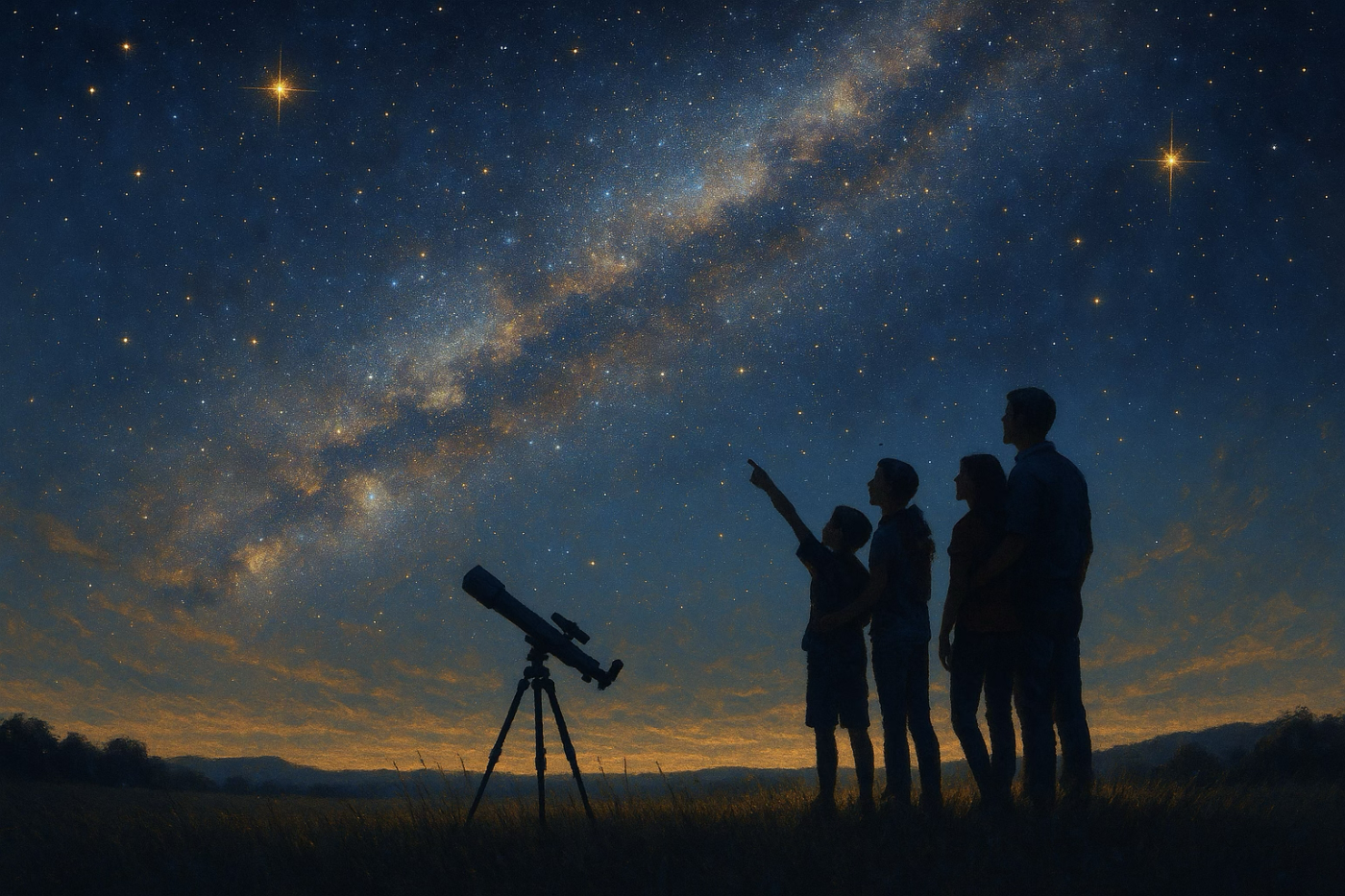| Earth — Made for Stargazing (2025-9-22) ⬅︎ |
 |
Our vantage point in a spiral arm is the perfect place for cosmic exploration.
Long ago, the ancient Greeks taught that Earth’s place in the cosmos was not just special but supreme. They believed our world sat immovably at the center, with planets tracing predictable paths around it while the stars — fixed to a great celestial sphere — rotated overhead in perfect order. It was, in their eyes, a vision of cosmic harmony.
In time, thinkers like Copernicus, Kepler, and Galileo overturned this picture. They revealed that Earth was not the center at all, but one of several planets orbiting the Sun. The Sun itself proved to be just one of billions of stars in the Milky Way, which in turn is only one of billions of galaxies scattered across the universe. To some, this seemed like a fall from glory — what a humbling discovery!
But the story does not end there. Far from being insignificant, Earth is uniquely remarkable. It alone — as far as we know — supports a dazzling web of life, including a species capable of looking up at the night sky and trying to understand it. And even more astonishing, our planet’s position within the Milky Way turns out to be a cosmic “sweet spot,” perfectly placed for exploring both the galaxy we inhabit and the universe beyond.
Earth sits about two-thirds of the way from the Milky Way’s core, nestled in one of its spiral arms. From here, we enjoy the best of both worlds: a front-row seat to the star clouds, nebulae, and clusters of our own galaxy, and clear windows through which to glimpse distant galaxies across the depths of space and time. Stargazing from Earth is not just possible — it is extraordinary.
If we lived near the galactic core, the sky would be dazzlingly crowded, flooded with countless stars and glowing nebulae. The view would be brilliant but blinding, blocking any glimpse of galaxies beyond.
If, instead, we lived on the outer rim, the Milky Way would shrink to a dim ribbon, leaving the heavens sparse and lonely. From there, many of the great treasures of our galaxy would fade into invisibility.
Only here, in our middle perch, do we have both the grandeur of the Milky Way and a clear view outward to the larger cosmos.
And there is yet another gift. As Earth orbits the Sun, our night sky changes with the seasons, opening different windows of exploration. In summer and winter, our gaze turns inward, revealing the richness of the Milky Way — in summer, the crowded galactic center, and in winter, the outer arms with Orion’s glowing nebulae. In spring and fall, the view shifts outward, giving us unobstructed access to the grand realm of galaxies, from the Virgo Cluster in spring to the Andromeda Galaxy in fall.
Taken together, Earth’s position and motion give us a uniquely privileged perspective. We can marvel at the Milky Way from within while still peering outward into the vastness of the universe. Our little planet is not the center of everything, but it may be the best seat in the house for cosmic discovery.
✨ Earth is made for Stargazing |
| |



